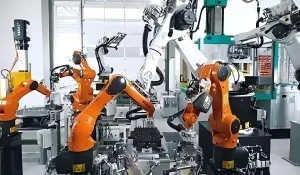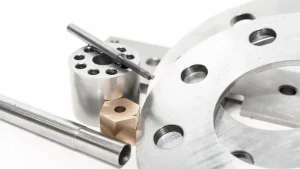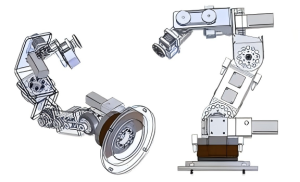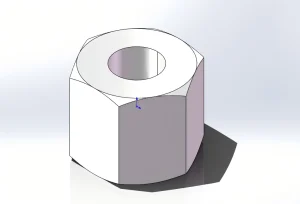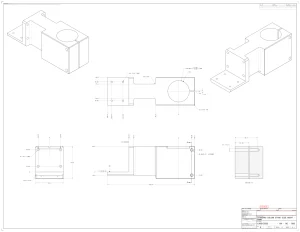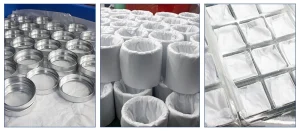Introduction
3D printing, also known as additive manufacturing, has emerged as a revolutionary technology with significant implications in the medical field. It enables the creation of highly customized and complex structures, tailored to meet the specific needs of individual patients. This technology has found extensive applications in areas such as prosthetics, implants, surgical models, and even bio-printing of tissues and organs. The ability to fabricate patient-specific medical devices and models offers enhanced precision, improved treatment outcomes, and reduced surgical risks. With the continuous development of 3D printing, it is poised to transform the medical industry by providing more personalized and efficient healthcare solutions.
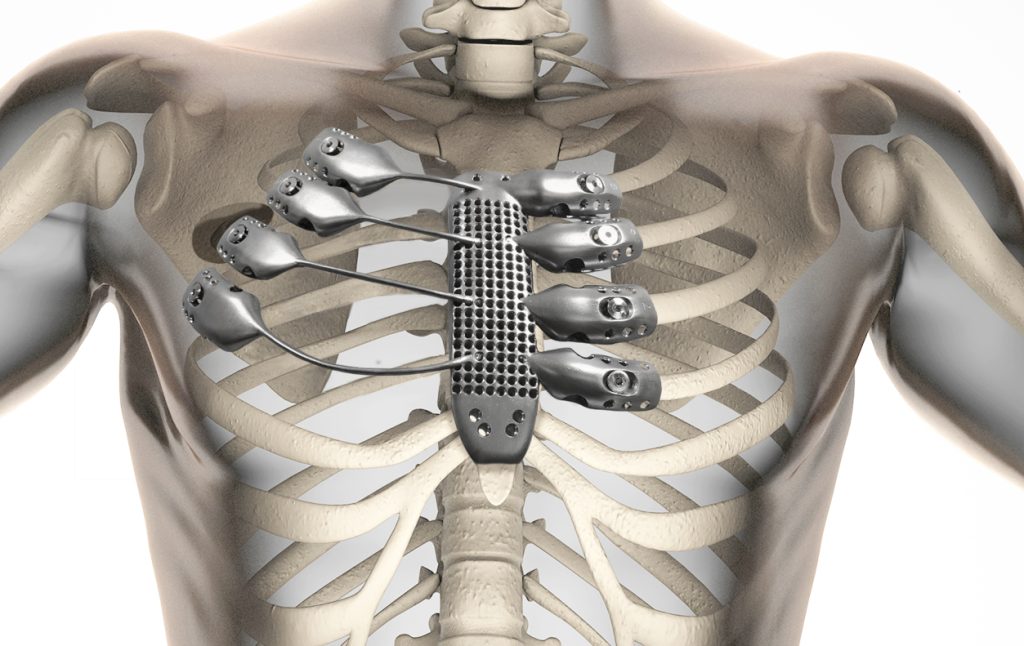
3D Printing Revolutionizes Medicine
3D printing has sparked a revolution in the medical field, enabling the creation of patient-specific solutions that were previously unimaginable. This technology allows for the customization of medical devices, implants, and even tissues, tailored precisely to an individual’s unique anatomy.
One of the most significant impacts of 3D printing in medicine is the ability to produce personalized prosthetics. Traditional prosthetics often have a one-size-fits-all approach, leading to discomfort and limited functionality for many patients. With 3D printing, prosthetics can be designed to fit an individual’s residual limb perfectly, enhancing both comfort and mobility. For example, a patient with a below-the-knee amputation can receive a custom-made prosthetic socket that conforms precisely to the shape of their limb, reducing pressure points and improving overall fit.
In addition to prosthetics, 3D printing is also transforming the field of implants. Implants such as hip and knee replacements can now be custom-designed to match a patient’s specific bone structure, improving surgical outcomes and reducing the risk of complications. This personalized approach not only enhances the performance of the implant but also shortens the recovery time for patients.
Another area where 3D printing is making a significant impact is in surgical planning. Surgeons can use 3D-printed models of a patient’s anatomy to better understand the complex structures and plan surgeries with greater precision. For instance, in a complex cranial surgery, a 3D-printed model of the patient’s skull can help the surgeon visualize the location of tumors or abnormalities, allowing for a more accurate and less invasive procedure.
Furthermore, 3D printing is paving the way for advancements in bio-printing, with the potential to create functional tissues and organs. While still in the experimental stage, this technology holds great promise for addressing the shortage of organ donors and providing personalized treatment options for patients with organ failure.
The rapid prototyping capabilities of 3D printing have also accelerated medical innovation. Researchers can quickly develop and test new medical device designs, reducing the time from concept to clinical application. This iterative process allows for continuous improvement and the development of more effective medical solutions.
1. PLA (Polylactic Acid)
Properties and Characteristics
PLA is a biodegradable and biocompatible thermoplastic polyester derived from renewable resources such as corn starch or sugarcane. It has gained significant popularity in the medical field due to its unique properties. PLA is known for its excellent printability, allowing for the creation of complex geometries with high precision. It has a relatively low melting point, which makes it suitable for various 3D printing techniques such as fused deposition modeling (FDM). Additionally, PLA exhibits good mechanical properties, although it may not be as strong as some other materials. It is also resistant to moisture and has a reasonable shelf life.
Medical Applications
In the medical industry, PLA is widely used for a variety of applications. It is commonly employed in the production of surgical models, which enable surgeons to plan and practice complex procedures before operating on patients. These models provide a detailed and accurate representation of a patient’s anatomy, allowing surgeons to better understand the surgical site and plan the most appropriate approach. PLA is also used in the fabrication of drug delivery devices, such as implants and capsules, which can release medications in a controlled and targeted manner. For example, PLA-based drug delivery systems can be designed to release drugs over an extended period, improving patient compliance and treatment efficacy. Moreover, PLA can be used for temporary implants, such as screws and plates, which provide support during the healing process and gradually degrade over time, eliminating the need for a second surgery for removal.
2. ABS (Acrylonitrile Butadiene Styrene)
Properties and Characteristics
ABS is a copolymer composed of acrylonitrile, butadiene, and styrene monomers. It exhibits a combination of properties that make it highly suitable for various applications. One of the key characteristics of ABS is its excellent strength and durability. It can withstand significant mechanical stress and is resistant to impact, making it ideal for applications where toughness is required. Additionally, ABS has good heat resistance and can maintain its structural integrity at relatively high temperatures. It is also known for its chemical resistance, being able to resist the effects of many common chemicals. Moreover, ABS has a smooth and shiny surface finish, which can be further enhanced through various post-processing techniques such as painting or plating. The material is easy to machine and can be drilled, cut, and shaped with relative ease.
Medical Applications
In the medical industry, ABS finds extensive use in the fabrication of durable medical equipment and prosthetics. It is commonly used to produce items such as surgical instruments, where its strength and durability ensure reliable performance during medical procedures. For example, ABS forceps and scissors can withstand repeated sterilization processes without losing their mechanical properties. ABS is also a popular choice for manufacturing prosthetic limbs. The material’s ability to mimic the mechanical properties of natural bone, combined with its lightweight nature, allows for the creation of prosthetics that offer both functionality and comfort to patients. Moreover, ABS can be customized in terms of color and shape, enabling the production of prosthetics that closely resemble the patient’s natural limb, which can have a positive psychological impact. Additionally, ABS is used in the production of medical device housings, as it provides a protective and aesthetically pleasing enclosure for the internal components.
3. Titanium
Properties and Characteristics
Titanium is a remarkable metal with several properties that make it highly suitable for medical applications. It is known for its excellent biocompatibility, meaning that it is well-tolerated by the human body and has a low risk of causing adverse reactions or rejections. Titanium exhibits high strength, comparable to that of some steels, while being significantly lighter in weight. This combination of strength and low density is advantageous for implants as it reduces the stress on surrounding tissues. Additionally, titanium has outstanding corrosion resistance, allowing it to withstand the harsh and corrosive environment within the human body over an extended period. It is also highly resistant to fatigue, enabling it to endure repeated loading and unloading cycles without failure.
Medical Applications
In the medical field, titanium is widely used in the manufacturing of permanent implants. Hip and knee replacements are commonly fabricated from titanium or titanium alloys. These implants provide long-term stability and functionality, allowing patients to Restore normal joint movement and improve their quality of life. Titanium is also used in dental implants due to its biocompatibility and ability to integrate with the jawbone. In addition,titanium is employed in the production of spinal implants, such as rods and screws, for the treatment of spinal disorders. The strength and corrosion resistance of titanium ensure the durability and reliability of these implants, reducing the need for revision surgeries. Moreover, titanium is used in the fabrication of various medical instruments and devices, where its properties contribute to their performance and longevity.
4. Stainless Steel
Properties and Characteristics
Stainless steel is an alloy that contains a significant amount of chromium, which imparts excellent corrosion resistance. It is known for its strength and durability, being able to withstand high mechanical stresses. Stainless steel has a smooth surface finish and is relatively easy to clean and sterilize, making it suitable for medical applications where hygiene is crucial. It also exhibits good resistance to heat and can maintain its mechanical properties over a wide range of temperatures. Additionally, stainless steel can be fabricated into various forms and structures, allowing for flexibility in design.
Medical Applications
In the medical industry, stainless steel is widely used in the manufacturing of surgical instruments such as scalpels, forceps, and scissors. Its strength, sharpness retention, and corrosion resistance make it ideal for these applications. Stainless steel is also used in the production of some implants, like certain types of bone plates and screws. These implants provide stability and support during the healing process of fractures and bone injuries. Moreover, stainless steel is employed in the construction of medical equipment and devices that require a combination of strength, corrosion resistance, and ease of cleaning, such as surgical tables and sterilization containers.
5. Biocompatible Resins
Properties and Characteristics
Biocompatible resins are a class of materials specifically designed to interact with biological systems without causing adverse reactions. These resins possess excellent biocompatibility, meaning they are well-tolerated by living tissues and have a low risk of triggering immune responses or inflammation. They can mimic the mechanical and physical properties of natural tissues to a certain extent, allowing for the creation of more realistic and functional medical models and implants. Additionally, biocompatible resins often have good chemical stability and can be processed under controlled conditions to achieve the desired shapes and structures.
Medical Applications
In the medical field, biocompatible resins have found diverse applications. They are commonly used in the production of detailed anatomical models for surgical planning and medical education. These models, created from biocompatible resins, provide surgeons with a tangible and accurate representation of a patient’s unique anatomy, enabling them to practice complex procedures and develop personalized surgical strategies. For example, in cardiovascular surgery, a resin model of the heart and its surrounding blood vessels can help surgeons plan the placement of stents or perform intricate bypass procedures. Biocompatible resins are also extensively utilized in dental restorations. They can be fabricated into crowns, bridges, and veneers that closely match the color, shape, and translucency of natural teeth. The biocompatible nature of these resins ensures long-term stability and compatibility with the oral environment, reducing the risk of gum irritation or allergic reactions. Moreover, biocompatible resins are being explored for use in tissue engineering and regenerative medicine, where they can serve as scaffolds for cell growth and tissue regeneration.
The Value of Rapidefficient in CNC Machining Market
Rapidefficient has established itself as a leading force in the CNC aluminum processing market, offering a unique blend of high precision and remarkable efficiency. Leveraging state-of-the-art technology and a team of highly skilled professionals, Rapidefficient has optimized every aspect of the CNC machining process to deliver outstanding results.
In terms of precision, Rapidefficient utilizes advanced computer numerical control systems that ensure accurate and consistent fabrication of aluminum components. The machines are calibrated to extremely tight tolerances, enabling the production of parts with intricate geometries and complex features. This level of precision is crucial in industries such as aerospace, automotive, and electronics, where even the slightest deviation can have significant consequences. For example, in the aerospace industry, precision-machined aluminum parts are essential for the proper functioning and safety of aircraft. Rapidefficient’s commitment to precision ensures that each component meets the strictest quality standards, minimizing the risk of errors and enhancing overall product performance.
Efficiency is another area where Rapidefficient excels. The company has implemented streamlined production processes and optimized tooling strategies to maximize throughput and minimize production time. By carefully analyzing each job and selecting the most appropriate machining parameters, Rapidefficient is able to reduce cycle times without compromising quality. Additionally, the company’s experienced operators are proficient in programming and operating the CNC machines, further enhancing overall efficiency. This efficient approach not only enables Rapidefficient to meet tight deadlines but also offers cost savings to customers. For instance, in a high-volume production run of aluminum parts, the reduced production time translates into lower labor costs and increased productivity.
Rapidefficient also places a strong emphasis on quality control. Stringent inspection procedures are in place at every stage of the machining process to detect and correct any potential defects. This includes the use of advanced metrology equipment such as coordinate measuring machines (CMMs) to verify the dimensional accuracy of the finished parts. By ensuring the highest quality standards, Rapidefficient helps customers avoid costly rework and recalls, enhancing their reputation and competitiveness in the market.
Furthermore, Rapidefficient’s commitment to continuous improvement drives innovation in CNC aluminum processing. The company invests in research and development to stay at the forefront of technological advancements, exploring new machining techniques and materials. This enables Rapidefficient to offer unique solutions to complex engineering challenges and provide customers with a competitive edge. For example, the company may develop novel strategies for machining lightweight aluminum alloys with enhanced strength and durability, opening up new possibilities in product design and performance.
In conclusion, Rapidefficient’s value in the CNC aluminum processing market lies in its ability to combine high precision with exceptional efficiency. Through advanced technology, skilled personnel, stringent quality control, and a focus on innovation, the company delivers top-quality aluminum components that meet the diverse needs of various industries. Whether it’s for critical aerospace applications or high-volume consumer electronics production, Rapidefficient is the go-to choice for reliable and cost-effective CNC aluminum machining services.
Conclusion
In conclusion, the five 3D printing materials discussed – PLA, ABS, titanium, stainless steel, and biocompatible resins – have revolutionized the medical industry. Each material offers unique properties and applications, enabling the production of customized medical devices, implants, and models. PLA’s biodegradability and printability make it suitable for surgical models and drug delivery systems. ABS’ strength and durability are ideal for durable medical equipment and prosthetics. Titanium’s biocompatibility and corrosion resistance are crucial for permanent implants. Stainless steel’s hygiene and strength are essential for surgical instruments and some implants. Biocompatible resins’ ability to mimic natural tissues is valuable for anatomical models and dental restorations.
Rapidefficient, a leading CNC aluminum processing service provider, plays a significant role in the manufacturing of 3D printing components. Their high precision and efficiency in CNC machining ensure the production of accurate and reliable parts, contributing to the overall success of 3D printing applications in medicine. As the medical industry continues to advance, the collaboration between 3D printing materials and precision machining services like Rapidefficient will be crucial in providing better patient care and treatment outcomes.
Call to Action
If you’re interested in high-quality CNC aluminum processing services, look no further than Rapidefficient. Their expertise and advanced technology can bring your projects to the next level. Explore their services today and experience the difference.

